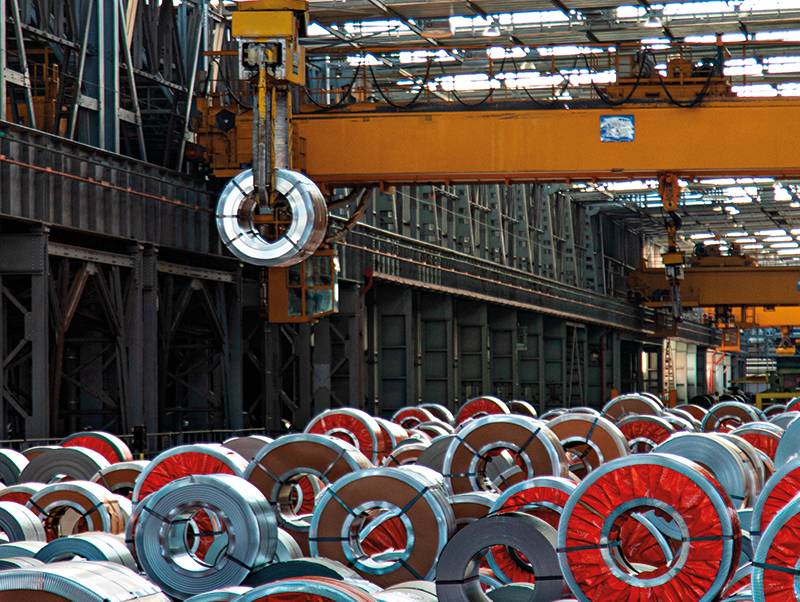
Italy offers new procedure to avoid exhaustion of EU steel import quotas
The EU safeguard measures offer country-specific and global quotas for certain steel products and were first introduced in 2018. Quota allowances are given for each quarter, with any material imported in addition to the quota allowance subject to a 25% import duty.
But on March 28, Italy’s customs agency Agenzia delle dogane e dei Monopoli (ADM) published a notice, suggesting that steel buyers can pull back from import operations to avoid exceeding the safeguard quota.
The move follows “numerous requests” of trade associations, Fastmarkets understands.
“Custom clearing steel at the end of the quarter, when quotas for some products and origins gradually get filled, has always been a bit like gambling – with a risk of having to pay the 25% duty,” a trader source in Italy told Fastmarkets.
“The new procedure can help us to use quotas more efficiently,” the source added.
Buyers will now have more flexibility and will be offered several options for clearing imported steel cargoes through customs.
Buyers of imported steel will now be able to withdraw from clearing purchased goods through customs when the quotas are close to exhaustion, according to the ADM document.
Or they might only clear part of a cargo with customs and transfer any excess volumes to the next quarter by keeping the goods in the port.
If material is subsequently required urgently, buyers will be able to proceed with customs clearance and the possibility of facing import duties.
“This [new procedure] is not a new regulation, it is, rather, an interpretation of safeguards use and just [provides another] an option for the buyers,” a second trader in Italy said.
Market participants told Fastmarkets the new mechanism will be particularly useful toward the end of any quota period, when allowances are close to being filled and when clearing import bookings gets increasingly risky – in terms of having to then pay the 25% import duty if the quota is exceeded.
“The new procedure is not very useful at the beginning of the reporting period, but at the end [of the quarter], when few volumes are left, it will help buyers to clear steel imports risk-free,” a buyer in Italy said.
“So, when the quota becomes critical – ie, more than 80-90% used – instead of waiting for the new period, buyers can partially customs clear their cargoes and use quotas more efficiently,” he added.
Another buyer told Fastmarkets: “Buyers can hold goods at ports without customs clearance and no one will know how much goods are sitting at customs.”
The new procedure came into effect on April 1.
So far, the new procedure only applies in Italy, but some market participants said the mechanism could eventually be extended across the EU.
Italy is one of the largest steel importers in the world. In 2023, it imported around 6.5 million tonnes of steel from outside EU, according to European steel association Eurofer.
Vlada Novokreshchenova in Dnipro has contributed to this report

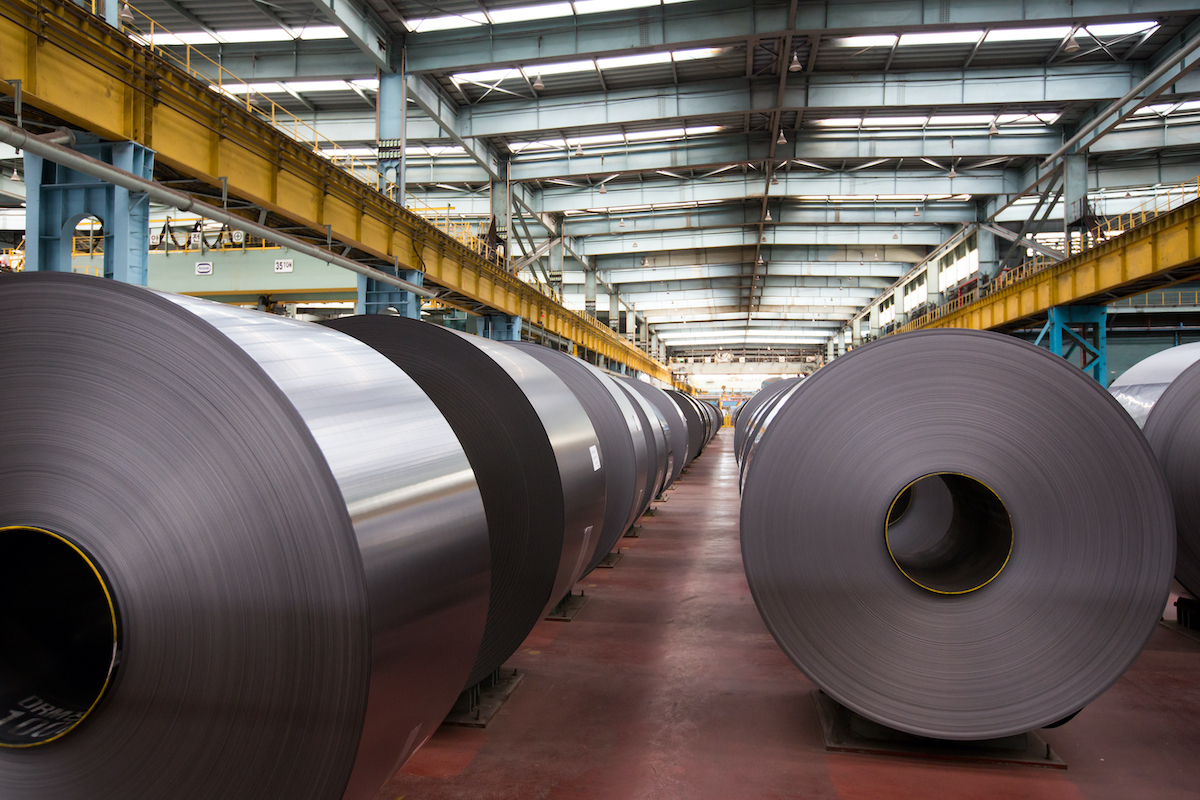
Worldsteel: China’s steel demand to fall in 2025
The World Steel Association (WSA) estimates China’s steel demand to be flattish in 2024 and to slip 1% in 2025 in its April Short Range Outlook, mainly weighed down by lower real estate investment. This is a relatively conservative estimate compared with Chinese institutions, Kallanish understands.
For 2024, WSA expects growth in infrastructure and manufacturing to compensate for the demand loss from property. But they admit they underestimated China’s steel demand weakness in Q4 2023, so that they needed to revise down their demand forecast for 2023 compared to last October by around 5%. The apparent steel use estimate for China in 2023 turns out to be a 3.3% drop on-year, much more in line with the Kallanish calculation of -3.5% than the original WSA forecast of 2% growth.
China has policies to boost demand by building affordable housing, renovating urban villages and constructing emergency public facilities, the so called “The Three Major Projects.” But local government financial burdens may slow down projects. The central government ordered 12 indebted local government to delay or stop some state-owned infrastructure projects this January.
For manufacturing, China saw robust car production this March and surging shipbuilding for the first two months this year. But more trade defence measures are being signalled globally, including from the EU and the United States. The European Commission started customs registration of electric vehicles from China last month as a step in their anti-subsidy investigation since last October. Five national labour unions meanwhile filed a petition for the US Trade Representative to investigate China’s shipbuilding sector last month. In addition, steelmakers in Vietnam have filed anti-dumping petitions last month against China’s hot rolled coils.
The China Iron & Steel Association (CISA) and the China Metallurgical Planning and Research Institute (MPI) estimates that 2024 demand will drop 1% and 1.7% on-year respectively (see Kallanish passim).


EU steel demand to recover in 2025: worldsteel
The 27 countries of the European Union plus the United Kingdom will have to wait until 2025 for a proper steel demand recovery. The World Steel Association sees EU steel demand increasing only mildly this year in “a technical rebound” before a more significant 5.3% rise in 2025. In 2024 steel demand is seen only 1.5 million tonnes higher than 2020, the year of the pandemic.
Europe is the region currently facing the biggest challenges, Kallanish gleans from worldsteel’s Short Range Outlook (SRO) steel demand forecast for 2024 and 2025. Steel-consuming sectors remain impacted by an unstable geopolitical landscape as well as uncertainty driven by high inflation, monetary tightening and partial withdrawal of fiscal support, while energy and commodity prices remain high.
“The persistence of these downside factors resulted in a major drop in the region’s steel demand in 2023 to the lowest level since the year 2000 and to substantial downward revisions of the forecast for this year,” worldsteel says.
European demand stood at 136.8mt in 2023 and should reach 140.7mt this year with a modest 2.9% surge. Demand is however predicted to rise y-o-y by 5.3% to 148.1mt in 2025.
Germany will remain among the world’s top ten steel-consuming regions together with China, India, United States, South Korea, Japan, Russia, Turkey, Mexico and Brazil. In 2023 Germany consumed 28mt of steel and it is forecast to absorb 28.9mt in 2024 reflecting a 3.2% hike. In 2025 the nation is expected to use 31.8mt with a notable 10% y-o-y hike.
The crisis in residential construction activity is expected to continue this year in most major markets with a recovery forecast for 2025. The sector suffers high construction costs and labour shortages which might reduce growth in public infrastructure and manufacturing investments in the short-term. Global manufacturing activity should start improving in 2024 although it remains affected by weak demand, high costs and tight financing. In contrast, the automotive industry which showed a strong recovery in 2023 should show weak growth in 2024.
The green transition will remain a strong driver behind public infrastructure investments. “A recent Economics Committee study estimated that global steel demand for new wind energy installations will triple by 2030 to around 30mt when compared with the early 2020s,” the report says. It adds that while the share of steel demand for wind energy installations will remain relatively low in total global demand, it may give quite a noticeable support to overall steel demand in certain regions such as Europe.
While globally geopolitical and inflationary tensions persist, a faster end to inflation and further monetary policy easing could support steel demand, particularly from the construction sector as well as strengthening investment in decarbonisation and public infrastructure against climate change risks.
Natalia Capra France

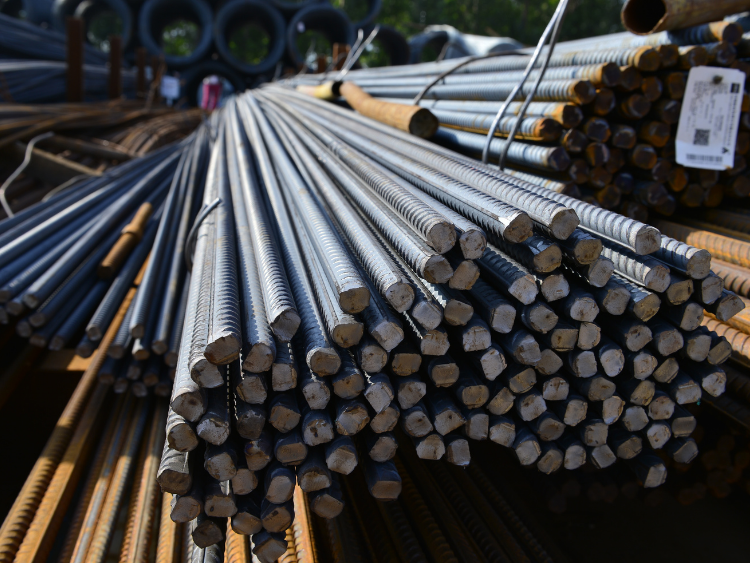
Demand, Chinese exports pressure global longs market: Irepas
While weak demand persists worldwide, “China’s aggressive exports” are putting pressure on the global long steel market. The market is perceived as unstable and challenging, with uncertainty looming, particularly beyond July, according to the according to the International Rebar Exporters and Producers Association (Irepas) in its April Short Range Outlook.
The global market anticipates positive signals from financial authorities overall, as customers in the US, EU, and Canada are postponing projects as they await easing interest rates, Kallanish notes.
China ramped up its exports in the first two months of 2024, surpassing its own record exports seen in 2015. Chinese steel producers are believed to be profitable, benefiting from reduced iron ore and coke prices, as well as lower energy costs within China, according to Irepas. Notably, China’s long steel exports continued to trail behind the country’s exports of flats.
Turkey’s Ministry of Commerce has imposed restrictions on exports of 54 product groups to Israel, including steel reinforcing bars and wire rods. Israel stands as one of the primary markets for Turkish exports within these product categories.
Following Turkey’s local elections at the end of March, there is anticipation of an economic slowdown in the country. The Turkish government aims to stabilize the value of the Turkish lira, which could be a disadvantage for Turkish steel mills in terms of their competitiveness.
In Europe, demand remains subdued, especially in Germany, where prices for reinforcing bars and wire rods are exceptionally low. The market saw a brief improvement at the end of 2023 but is not expected to recover until the second half of the year. Cut and bend prices are currently below replacement costs, and it may take several months for spreads to normalize.
Meanwhile, US steel output decreased by 600,000 tonnes in January-March compared to the same period in 2023.
Elina Virchenko UAE


Weak sales of finished product impact scrap: Assofermet
The outlook for finished steel product sales remains negative, says Italian steel trade association Assofermet. “Without a recovery in steel production and an improvement in the finished product sales – a picture that would lead to an increase in scrap demand– it is difficult to imagine possible increases in prices in the short term,” the association says in its market note monitored by Kallanish.
March domestic scrap prices declined between €15-20/tonne ($16-21/t). Demand from local mills remained consistently low due to production stoppages, which generated a significant slowdown in scrap deliveries. Despite the reduced deliveries, mills’ scrap yard stocks remain medium-high, Assofermet observes.
On the collection side, merchants noted a drastic drop in scrap availability on the market owing to the slowdown of manufacturing activity. This has sparked concern and may cause shortages if scrap demand recovers.
Meanwhile, the positive sentiment in the April pig iron market is forecast to drive some more scrap demand in Italy.
In March the Italian and European markets were generally weak with mills not showing particular interest in pig iron procurement. Russian producers refused last month to decrease their offers to Italy and the difference between pig iron and scrap prices remains significant. Internationally, Assofermet registered good pig iron demand and price levels. Offers from Brazil and Ukraine have resurfaced in addition to Russian offers.
US pig iron imports increased last month, allowing Brazilian suppliers to maintain a price level about $40/t higher than the European market.
Natalia Capra France

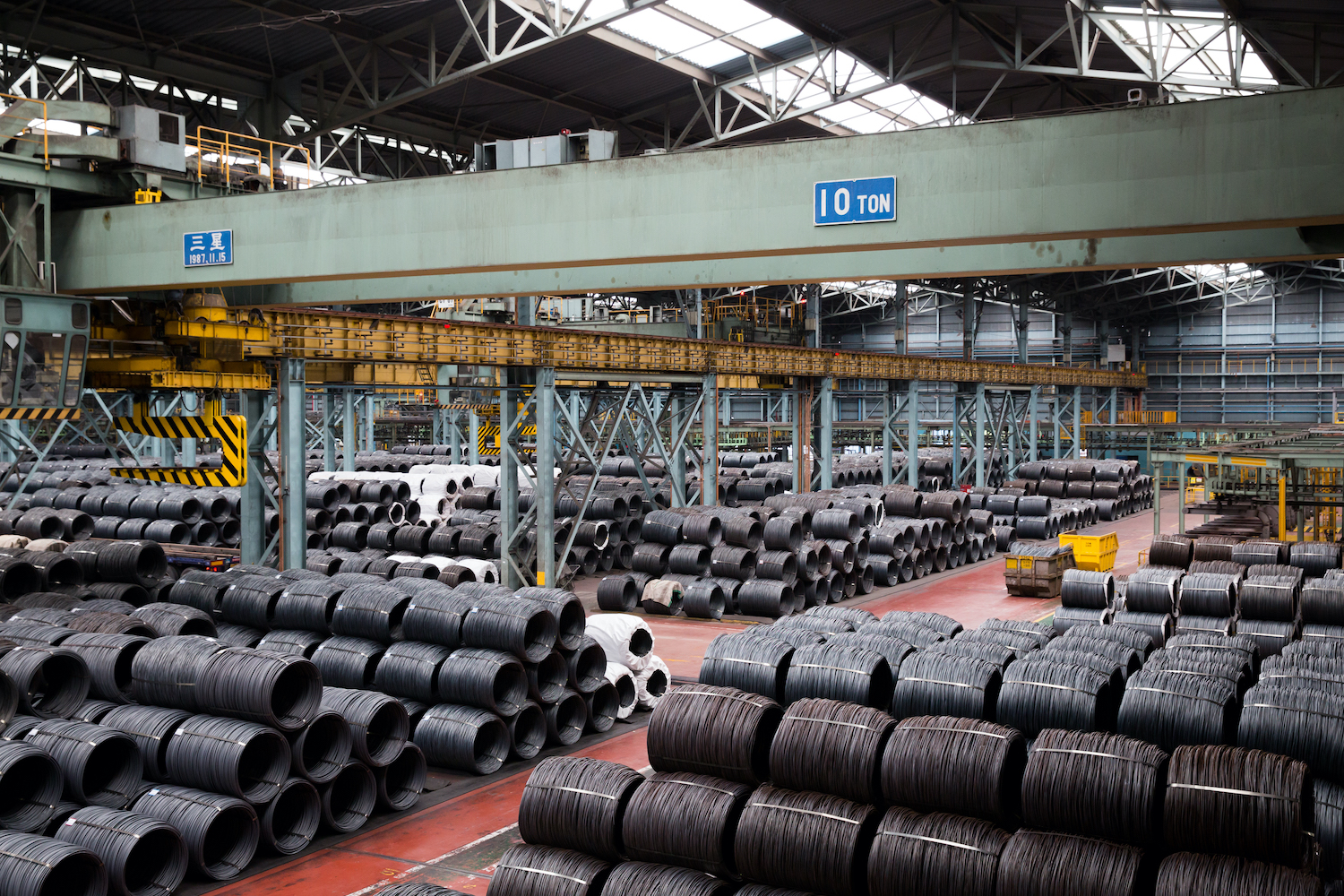
Worldsteel predicts modest steel demand rebound in 2024-25
Demand for steel worldwide will rebound by 1.7% in 2024 and will grow a further 1.2% next year, worldsteel predicts in a new short-range outlook examined by Kallanish.
Noting that those consumption growth rates are still relatively weak, worldsteel observes that the global economy seems headed for a soft landing and steel will be in heavy demand from public infrastructure and decarbonisation programs.
“After two years of negative growth and severe market volatility since the Covid crisis in 2020, we see early signs of global steel demand settling in a growth trajectory in 2024 and 2025,” comments Martin Theuringer, chairman of the worldsteel economics committee.
Steel demand in 2024 is projected to be 1.79 million tonnes, according to worldsteel’s outlook. For 2025, the volume should reach 1.81mt.
The apparent end of the monetary tightening cycle will provide relief from the downturn in housing activity and global manufacturing, Theuringer emphasises.
“We expect to see continued strength in investments in public infrastructure and manufacturing facilities,” the outlook document mentions. “However, we also observe that high construction costs and labour shortages emerge as major constraints for many major economies, and this might constrain further growth in public infrastructure and manufacturing facility investments in the short-term.”
Worldsteel predicts that steel consumption in China will remain flat this year compared with 2023. India is experiencing strong steel demand growth. A rebound is occurring in the MENA and ASEAN regions.
“The developed world is also expected to show a strengthening recovery with 1.3% in 2024 and 2.7% in 2025, as we expect to see steel demand finally showing a meaningful pick up in the EU in 2025 and continued resilience in the US, Japan and Korea,” the outlook specifies.
Further, “risks have moderated since our last update in October 2023 and are balanced,” worldsteel observes.
“On the upside, we believe that a faster than expected disinflation accompanied by further monetary policy easing could provide a significant boost to steel using sectors, particularly housing construction,” the authors comment. “We also believe that an acceleration in global decarbonisation efforts or in efforts to strengthen public infrastructure against rising climate change risks are significant positive risks that can support global steel demand going forward.”
Escalating geopolitical tensions, persistent inflation, and rising public borrowing in major economies, however, “are significant risks that certainly have the potential to slow down the ongoing economic recovery or even derail it.”

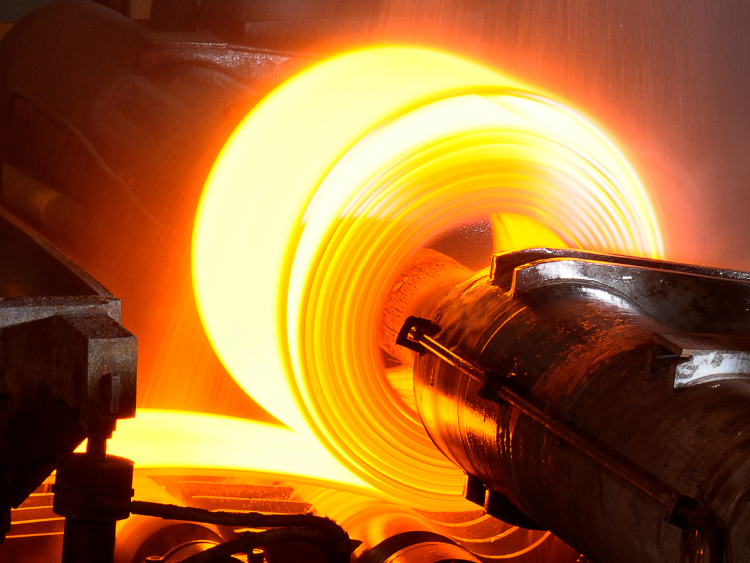
European HRC prices continue to slide on lack of demand
Offers from integrated mills in Northern Europe for HRC with May-June lead times were heard in the range of €650-660 ($704-715) per tonne ex-works on Monday.
This was in sharp contrast with offers reported in early March at €720-730 per tonne ex-works.
But the lower prices failed to spur buying and trading remained very slow. Sources told Fastmarkets that demand from key steel-using sectors has dropped by around 15-20% year on year and this has affected purchases.
Trading was also limited by buyers’ expectations that the rock bottom for HRC prices has not yet been reached, while producers resisted further price drops citing high input costs.
“Mills claim that current [HRC] prices are already at cost-line for them and everyone sees that reducing the price doesn’t have any effect on the market – trading remains weak,” a buyer in Germany told Fastmarkets.
“Next week [at the Tube and Wire trade fair on April 15-19] in Dusseldorf, we might see some restocking, but prices are unlikely to rebound unless mills announce output cuts. And even in this case, effects on the [HRC] market will not be immediate,” a second buyer said.
Industry sources estimated tradeable market levels in the range of €640-660 per tonne ex-works, depending on tonnage.
Fastmarkets calculated its daily steel HRC index domestic, exw Northern Europe at €651.25 ($705.64) per tonne on Monday, down by €5.83 per tonne from €657.08 per tonne on Friday.
The index was down by €12.50 per tonne week on week and by €53.00 per tonne month on month.
Fastmarkets calculated the corresponding daily steel HRC index domestic, exw Italy at €635.00 per tonne on Monday, down by €0.83 per tonne from €635.83 per tonne on Friday.
The index was down by €10 per tonne week on week and by €43.75 per tonne month on month.
HRC offers in Italy were mainly heard at €650-660 per tonne delivered, which is equivalent to €640-650 per tonne ex-works.
Fastmarkets’ sources estimated tradeable market levels in the range of €630-640 per tonne ex-works, but trading remained very limited.
“It is not a question of price – it is a question of [end-user] demand. Demand remains very, very limited and most buyers can live on hand-to-mouth [HRC] bookings,” a trading source in Europe said.
Import offers of HRC from Asian producers to Italy were heard at €560-580 per tonne CFR. According to a buyer source, even lower levels by €5-10 per tonne can be negotiated for potential deals.
But customers remained reluctant to buy due to the overall downtrend with HRC prices, the buyer source added.
Another reason for the postponed signing of import contracts was the lack of clarity with the allocation of the import quotas for the second quarter of the year.
Published by: Julia Bolotova, Darina Kahramanova


Lindqvist steps down as SSAB chief
Lindqvist has six months’ notice and has agreed to stay until a successor is in place, according to the announcement. A recruitment process to find his successor will start immediately.
Lindqvist has been SSAB’s CEO for 13 years and has worked at the company for 26 years.
“During Martin’s time as CEO, SSAB has developed into a publicly traded company with global markets and a strong financial position,” SSAB board chairman Lennart Evrell said in the announcement. “He has been fundamental in building the company that SSAB is today and in driving the transformation to fossil-free production.”
SSAB Americas, a division of SSAB, was selected for award negotiations as part of the US Department of Energy’s $6 billion investment in projects to decarbonize energy-intensive industries.
The company was chosen for the potential construction of a HYBRIT manufacturing facility, which can produce fossil-free iron by using green hydrogen instead of fossil fuels.
SSAB Americas, the largest producer and supplier of steel plate in North America, operates a mill in Muscatine, Iowa, and the company’s special steels division has a facility in Mobile, Alabama.
Published by: Rijuta Dey Bera


European HRC market sentiment bearish on weak demand, oversupply
European hot-rolled coil prices remained under pressure on April 9 due to combination of poor demand and excess supply.
The mills have been trying to hold prices stable in local markets but were giving discounts when making offers to other European countries, sources said.
“We see different prices from the mills depending on the destination and a buyer, there is no unified approach,” a Benelux-based service center said.
Platts assessed domestic prices for hot-rolled coil in Northwest Europe stable on day at Eur640/mt ex-works Ruhr on April 9.
Tradable values were reported at Eur630-640/mt ex-works Ruhr with majority of data reported at Eur640/mt ex-works Ruhr.
German mills offered material to local buyers at Eur650-670/mt ex-works Ruhr, offering material with a discount to other European countries. Market participants said the discounted prices – around Eur610-620/mt ex-works Ruhr – were not available to the German market and were excluded from the assessment.
Steelmakers across Europe have been offering May delivery coil.
Platts, part of S&P Global Commodity Insights, assessed domestic prices for hot-rolled coil in South Europe stable on day at Eur620/mt ex-works Italy on April 9.
Offers have been heard at Eur640-650/mt delivered Italy, bids – at Eur620/mt delivered Italy and tradable values – at Eur620/mt ex-works Italy. Some sources, however, said that the prices of Eur620/mt ex-works would not be accepted for sales within Italy.
Demand, in the meantime, remained muted from end consumers and distributors have been avoiding bookings in the bearish market. Majority of market sources believe that steelmakers need to stop some furnaces to tackle excess supply and, therefore, to prevent price drops.
“The only way to deal with lack of demand and oversupply is stoppages of the furnaces, but the steelmakers take their time,” a German service center said.
Some market sources, however, reported that the distributors might need to restock soon as they have been avoiding booking of substantial volumes since the start of the year.
“Demand still low, with possible small improvement during second half of April due to restocking, with May feeling more positive,” an Italian service center said.
“There are some lights are there by the end of the tunnel, bigger distributors started to talk about restocking, searching for bottom and intensifying the interest,” a distributor said.


Vallourec partners with NextChem for hydrogen solutions
French pipemaker Vallourec’s hydrogen storage solution, called Delphy, will be integrated into worldwide hydrogen and green ammonia production projects implemented by Italian energy transition specialist NextChem Tech, a subsidiary of Maire Group.
Vallourec and NextChem will research synergies between Nextchem’s green ammonia production technologies and Vallourec’s high-capacity hydrogen storage solution. Delphy will help sort the intermittency issue in producing green hydrogen from renewable energy, ensuring continuous supply to industrial processes, particularly green ammonia production, Kallanish notes.
Delphy is an underground system capable of storing up to 100 tonnes of gaseous hydrogen. In December last year, Vallourec inaugurated a Delphy demonstrator at its site in Aulnoye-Aymeries, northern France. The demo is made of tubes and connections equipped with sealing technology and corrosion resistance. It is installed underground and is designed for green hydrogen producers and users for industrial applications and heavy mobility.
Over the past two years, Vallourec has been developing its New Energies division, a portfolio of solutions designed to support the energy transition, including geothermal, hydrogen storage, carbon sequestration, solar and biomass. The pipemaker is also working on a new protocol to test its tubular solution for safe hydrogen transport. A research team is studying its VAM 21 connection behaviour at temperatures and tensions relevant for the storage of hydrogen.
Vallourec aims to reach 10-15% of Ebitda from New Energies by 2030. Last month, ArcelorMittal agreed to acquire 28.4% of the company. ArcelorMittal ceo Aditya Mittal said Vallourec has a critical role to play in the energy transition, producing vital products for hydrogen, carbon capture and geothermal applications, for which demand is expected to grow (see Kallanish passim).
Natalia Capra France


